Kernel Wealth
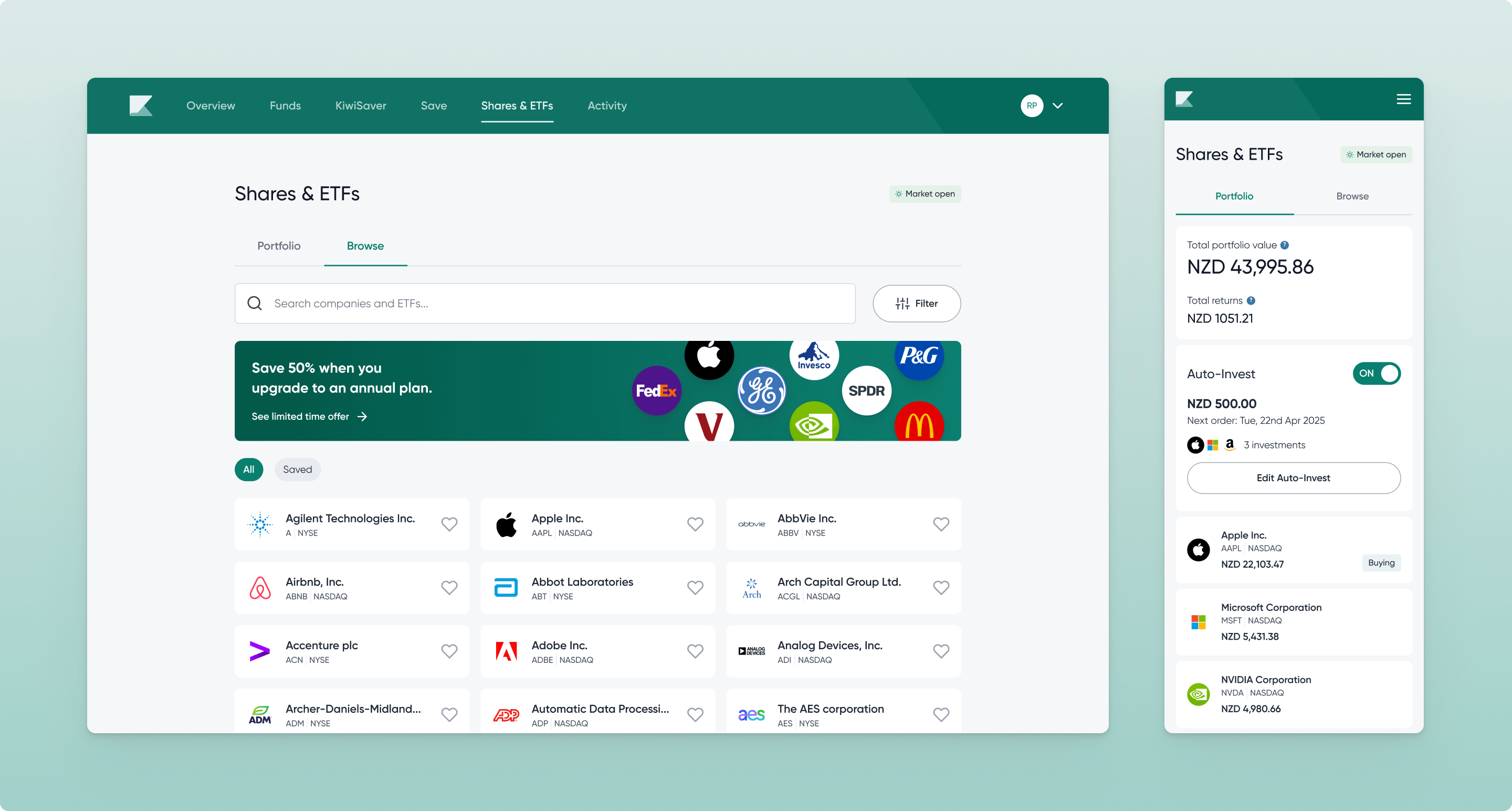
Kernel Wealth is a digital wealth platform helping New Zealanders build long-term financial freedom through a modern suite of investment and savings products. From index funds to high-interest savings, cash funds and bonds, US shares and ETFs, and KiwiSaver, Kernel offers a seamless way to grow and manage your money in one place. With a focus on transparency, automation, and long-term performance.
In New Zealand, a significant share of investment capital is directed toward individual shares and ETFs. Despite the potential for higher risk and fees, direct investing remains popular, offering benefits like greater choice, customization, and diversification. While Kernel has historically focused on PIE funds as a long-term investment solution, customer feedback highlighted a desire for more flexible options. To enable users to manage their wealth in one place and attract investors with diverse philosophies, we expanded our offering to include Shares and ETFs, broadening both functionality and choice.
I was the sole product designer on this project, leading the design system and product design, synthesizing user feedback from our beta release, and designing updates for the marketing site ahead of the public launch.
As at July, 2025
NZD 524
Average trade amount
18%
Shares & ETFs accounts opened by eligible accounts
NVDA
Most popular share
Design challenge
“How might we broaden our offering with Shares and ETFs to give customers more ways to manage and grow long-term wealth?”
Chapter
To support this expansion, we partnered with Alpaca a trading API platform that could handle both our immediate needs and scale with future plans. Given the sensitivity of the release, we chose to build entirely in-house. This meant delaying wider research and user feedback until Alpha and Beta stages when the risk of information leaks was lower. This was Kernel’s first step into active investing products, requiring a team-wide uplift in understanding of market norms and trading terminology.
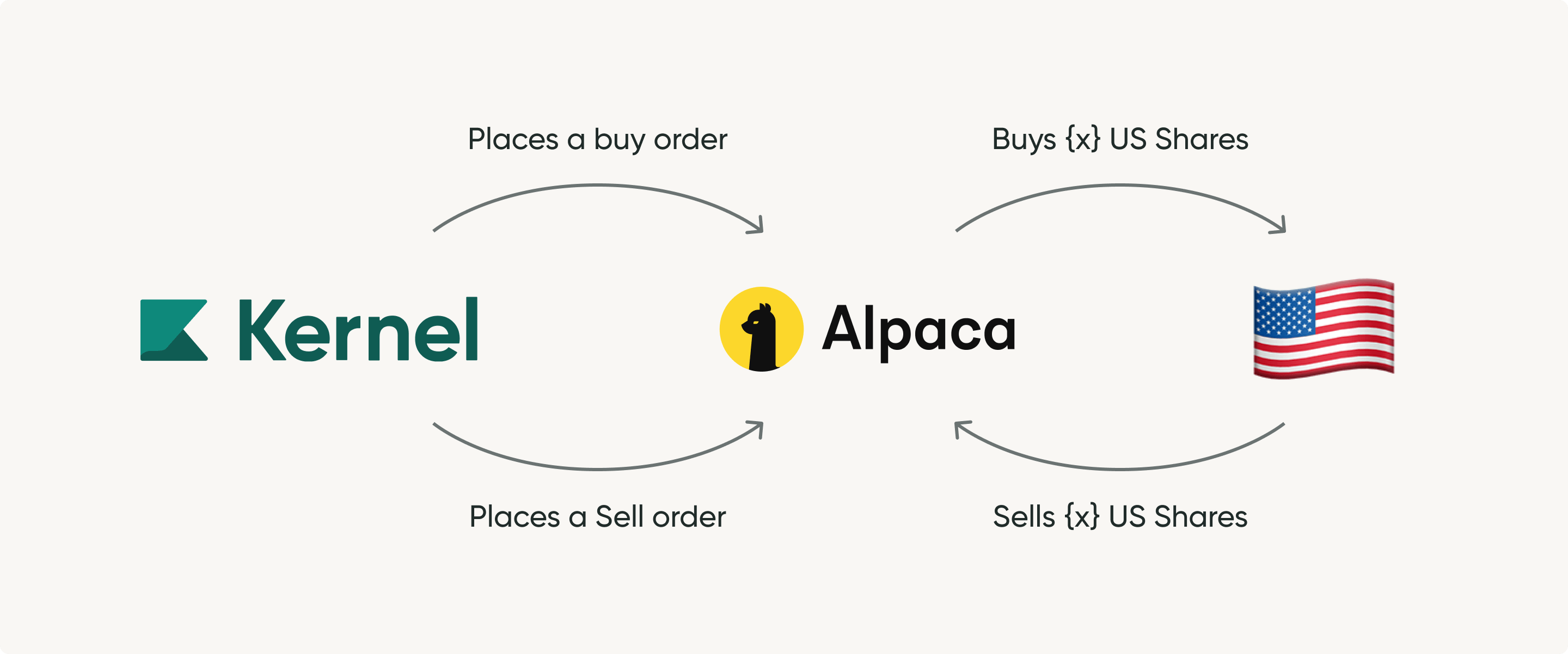
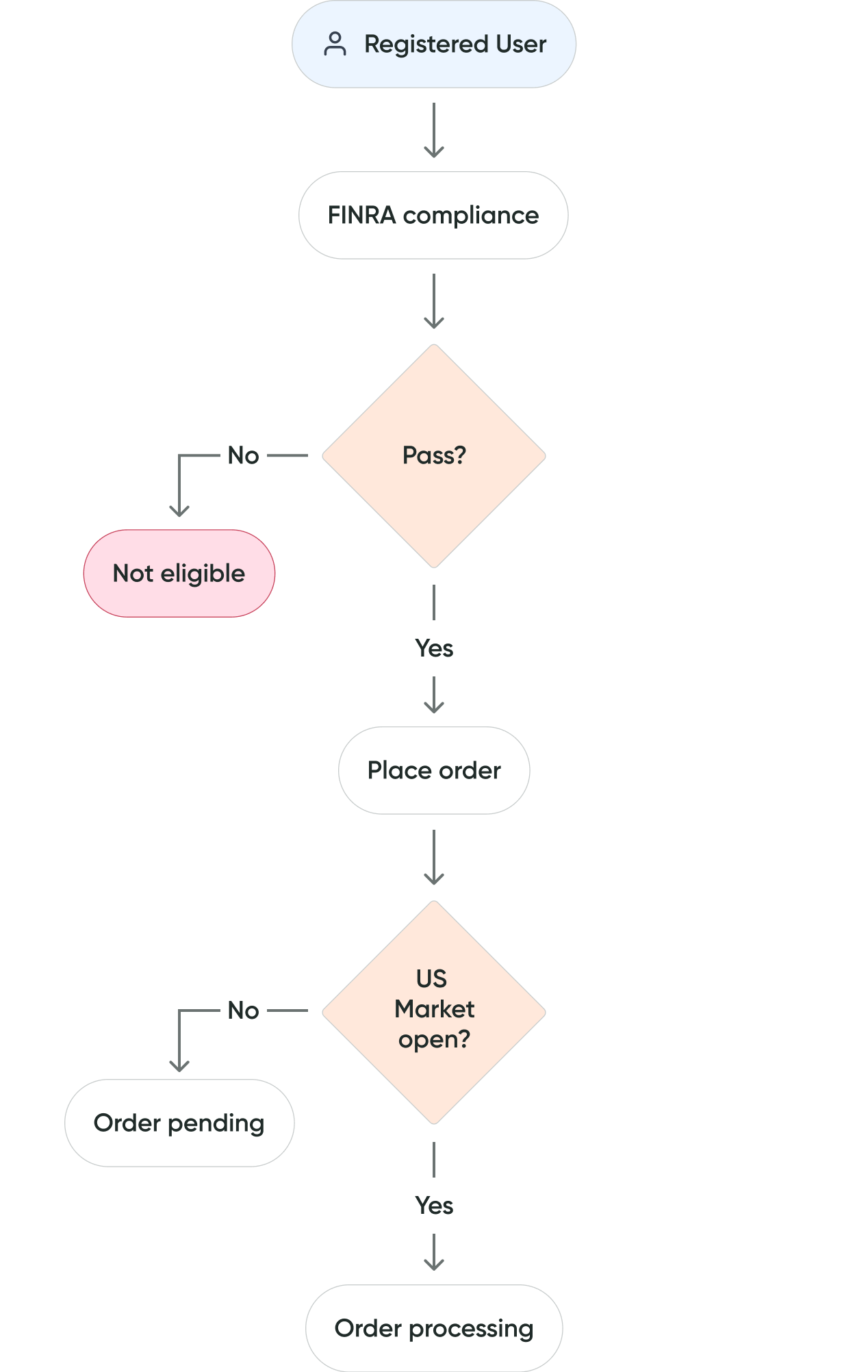
Shares and ETFs brought new layers of complexity. Unlike our PIE funds, we now needed to onboard users under US trading regulations, not just NZ AML requirements. This meant architecting a new compliance flow balancing legal obligations with user experience.
Trading also introduced time-sensitive elements real-time currency exchange, US market hours, and price fluctuations that shaped our data strategies and interface designs.
Chapter
For implementation speed and to protect our existing infrastructure, I scoped the new trading experience to operate in a separate area in the product. This allowed the Tech team to work with less restrictions and dependencies. While this meant some user friction initially, it positioned us for faster delivery and iterative improvements post-launch.
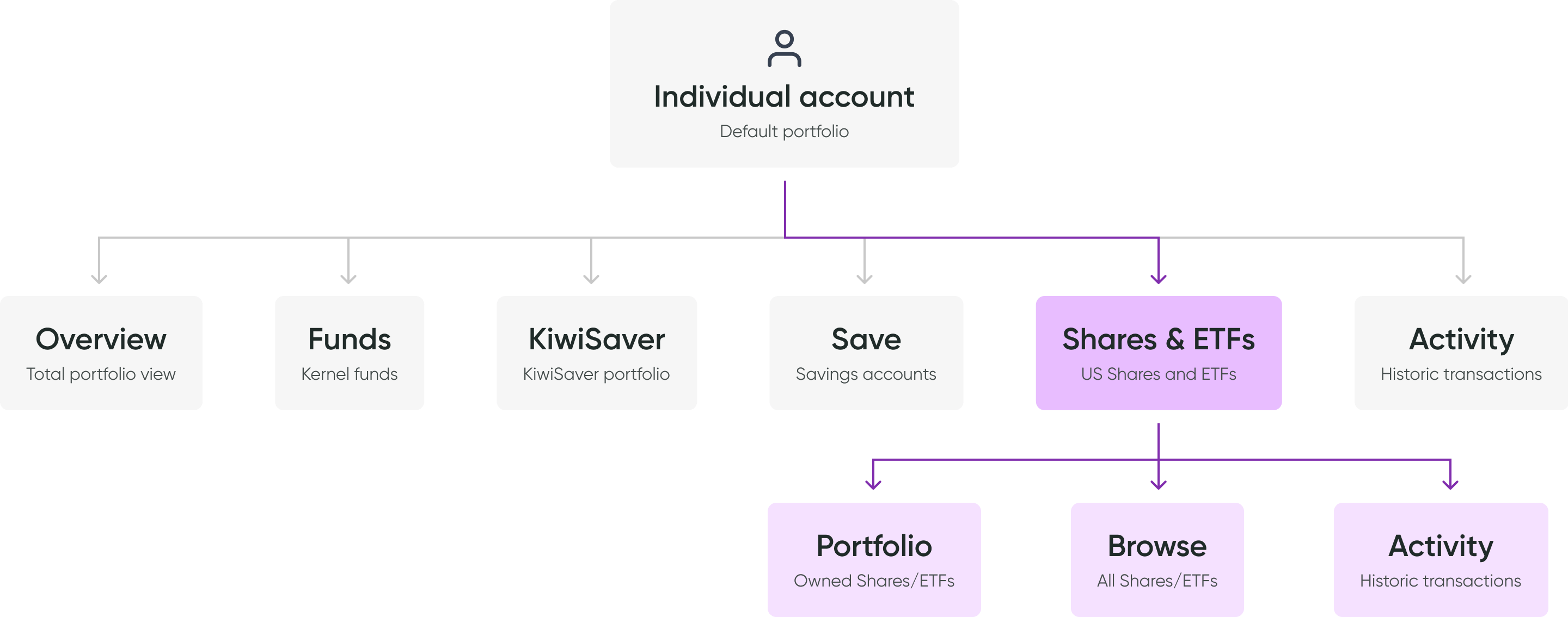
To offer US Shares & ETFs on the platform, our users had to comply with FINRA regulations. This meant the inclusion of a new onboarding flow. The onboarding process for trading was significantly longer and more intrusive than our other products. I worked closely with our operations team to reduce friction where possible by simplifying language and keeping the steps focused to low individual cognitive load chunks.
The browsing flows also presented a scale challenge: 500+ Shares and ETFs compared to 25 PIE funds. For this to work, it required a new system for how users browse products on the platform. The focus of browsing also needed to change to prioritise scanability and efficiency, introducing more compact card layouts, filters, and search tools, optimised for high-volume decision making.
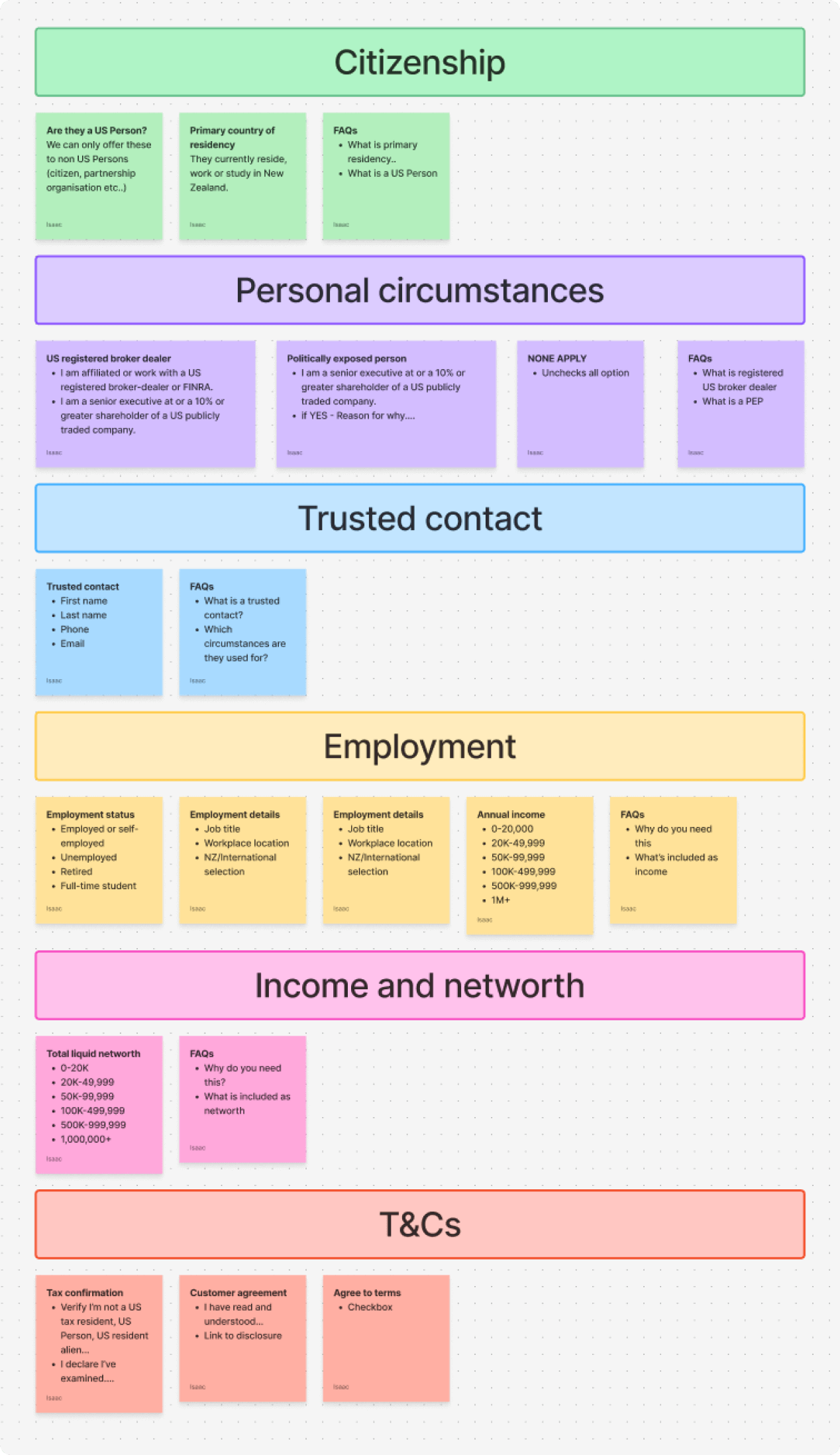
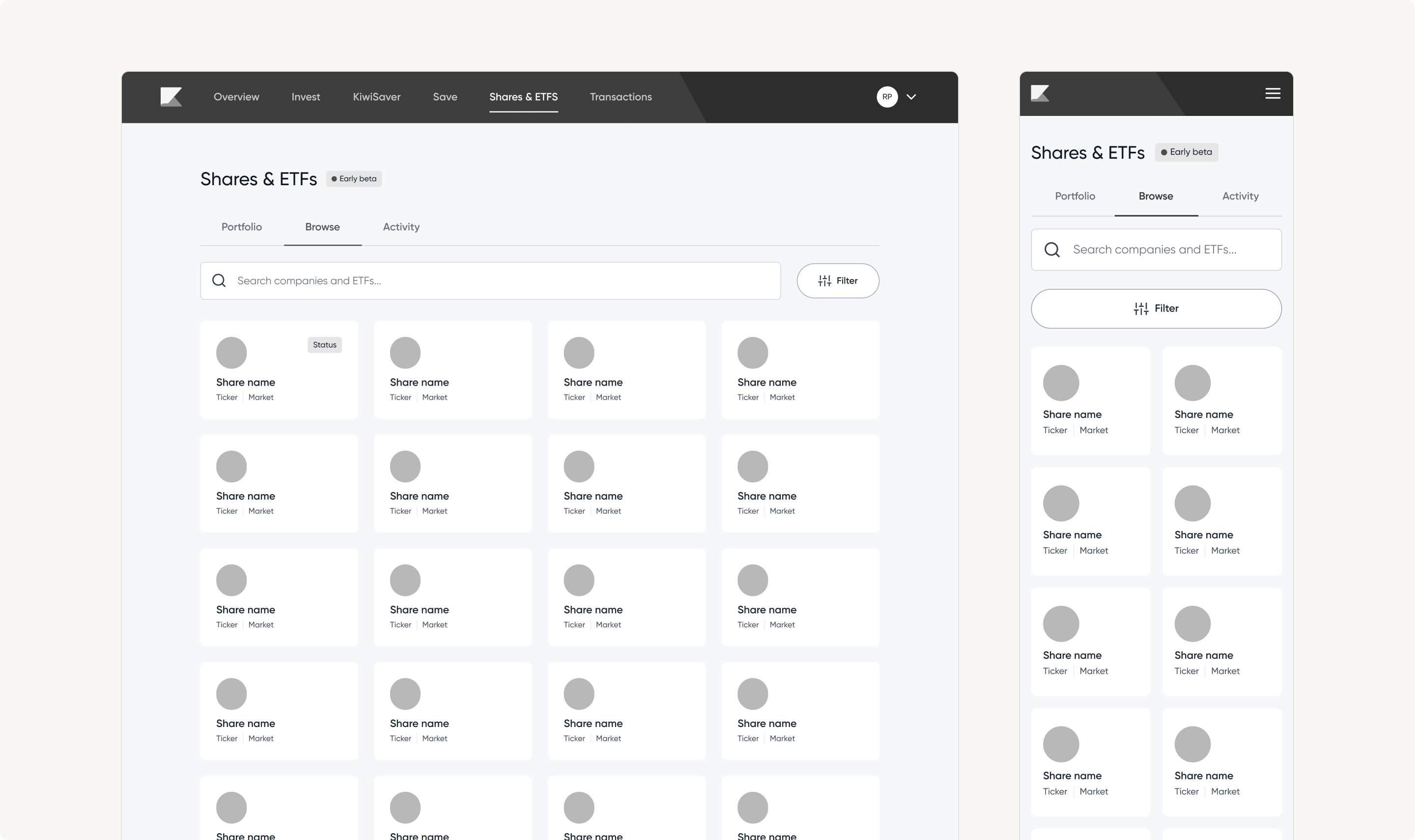
Chapter
Our original browse cards were designed to offer high levels of context and information. This approach worked well in Kernel’s early days when we needed to educate users on our limited range of funds. However, Shares and ETFs introduced a different problem. Many of these brands like Apple are already well-known, so less context is required. With over 500 products now available, space efficiency and scanability became far more important. This led to a series of iterative changes to the card design, balancing clear product names with fast browsing and easy discovery.

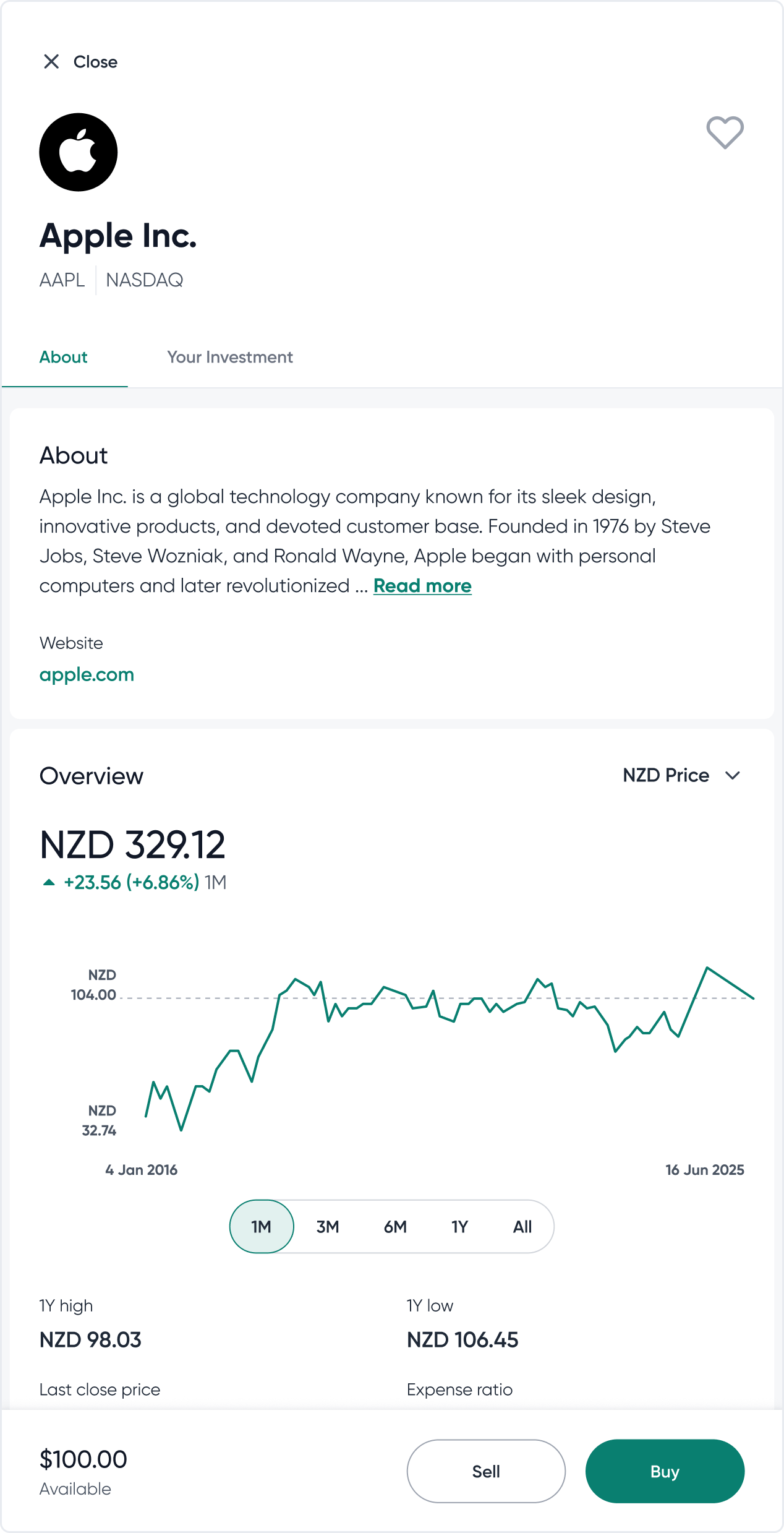
Our existing drawer pattern already worked well across device types, it provided easy access to details on desktop while remaining mobile-friendly. Thanks to its modular, stacked-card structure, I was able to adapt the component for Shares and ETFs with minimal friction. This allowed us to reuse established interaction patterns while expanding the underlying data model to support new product types like funds, savings accounts, and direct equities.
My goal with onboarding was to reduce cognitive load while still meeting compliance requirements. I focused on single, bold questions per page with short, conversational response options. To handle more complex queries, I added expandable FAQ sections beneath key questions, helping users self-serve and reducing reliance on customer support. This structure also gave us flexibility to easily add new content in response to emerging friction points.

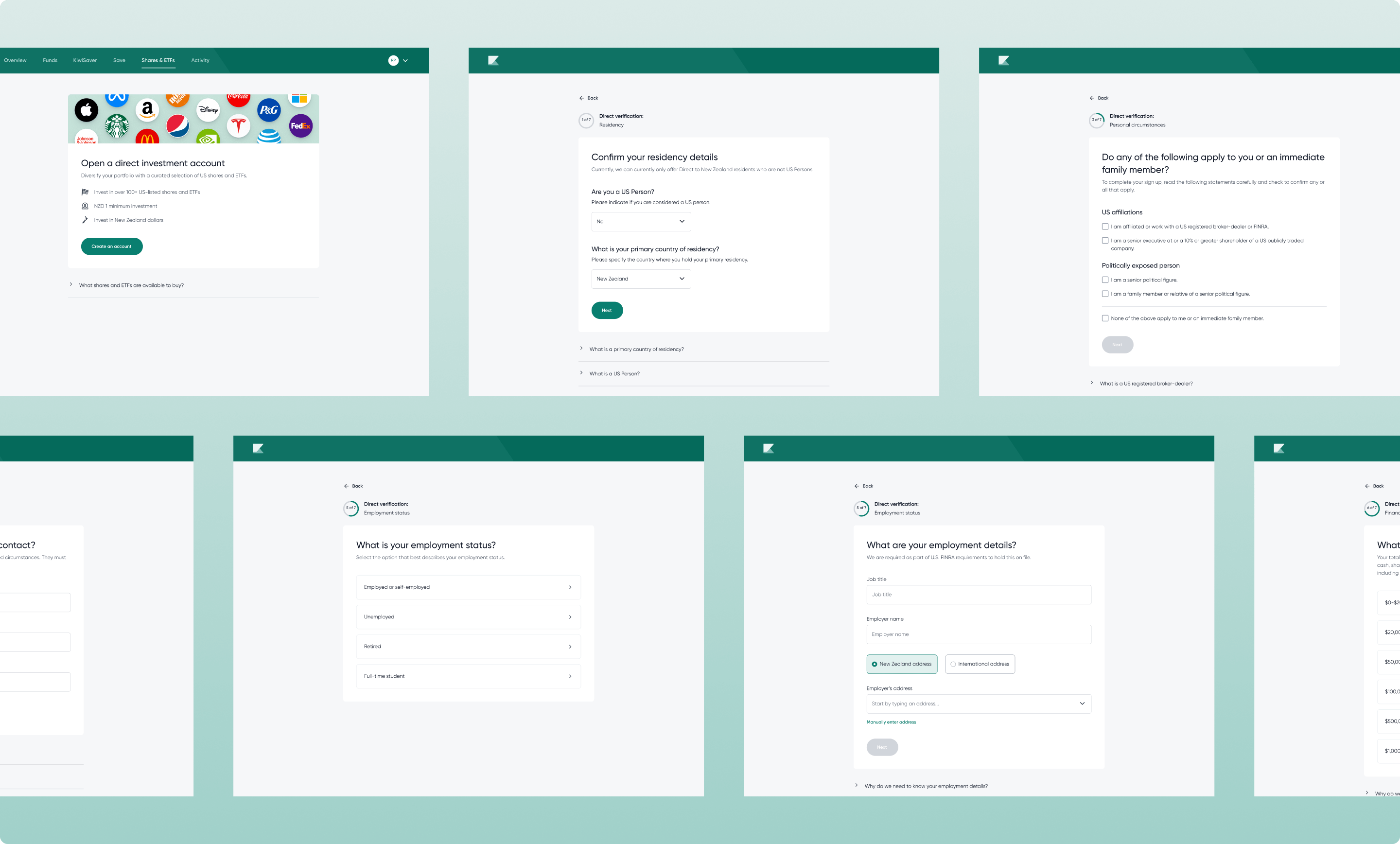
Chapter
For the Beta, we curated a group of engaged users based on surveys and early interest signals. Our Product Lead set up dedicated feedback channels, which I synthesised into key themes around pricing, features, and user expectations. These directly shaped priorities for the public release. The Beta was critical in validating our offering, fine-tuning the pricing model, and stress-testing support processes reducing risk at scale.
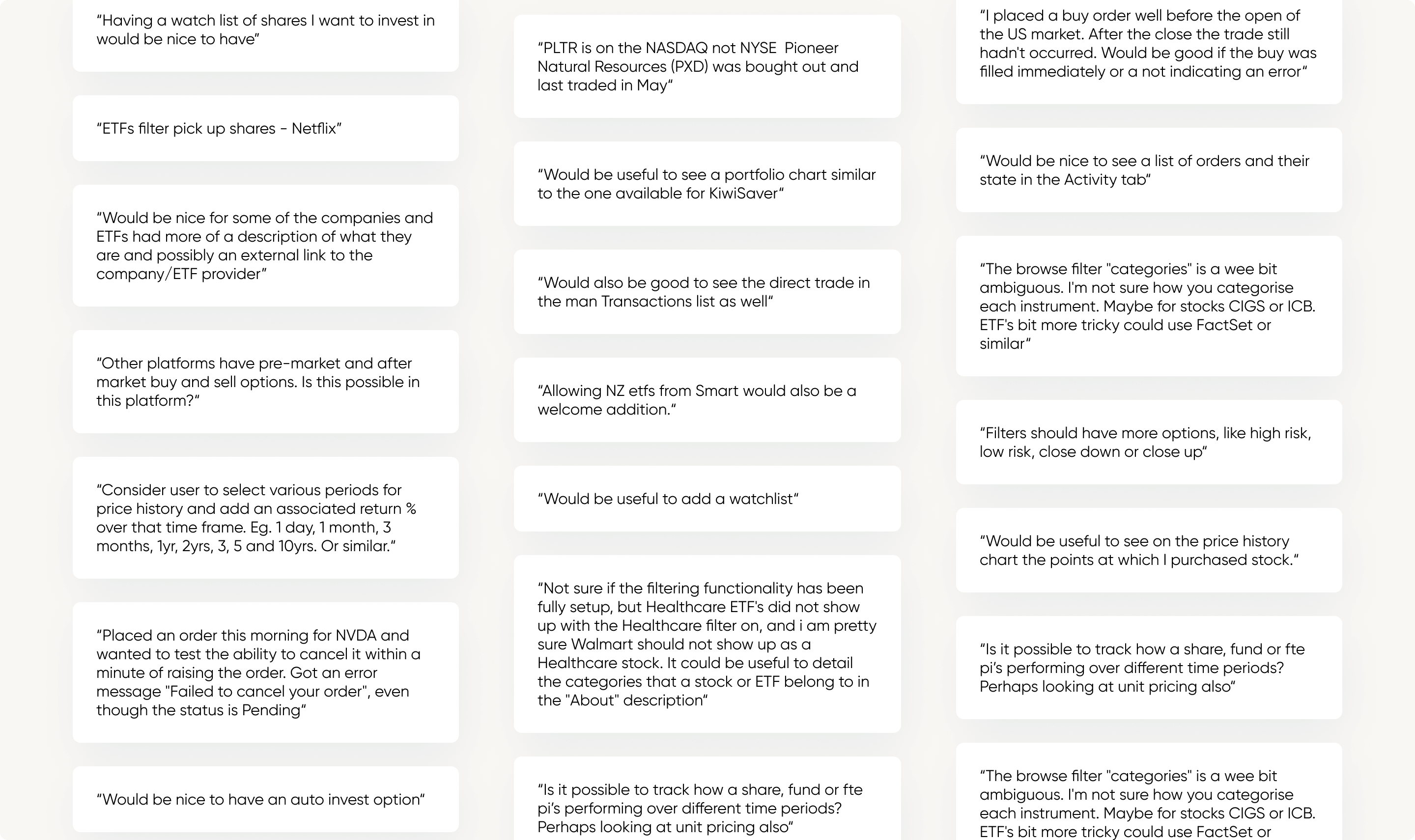
The Beta phase positioned us well for public launch. With a highly engaged test group, we were able to validate our feature roadmap early and move quickly on improvements. Throughout the Beta we made solid progress on key additions including watchlists, Auto-Invest, integration with goals and historic performance graphs were all designed to add further value at launch.
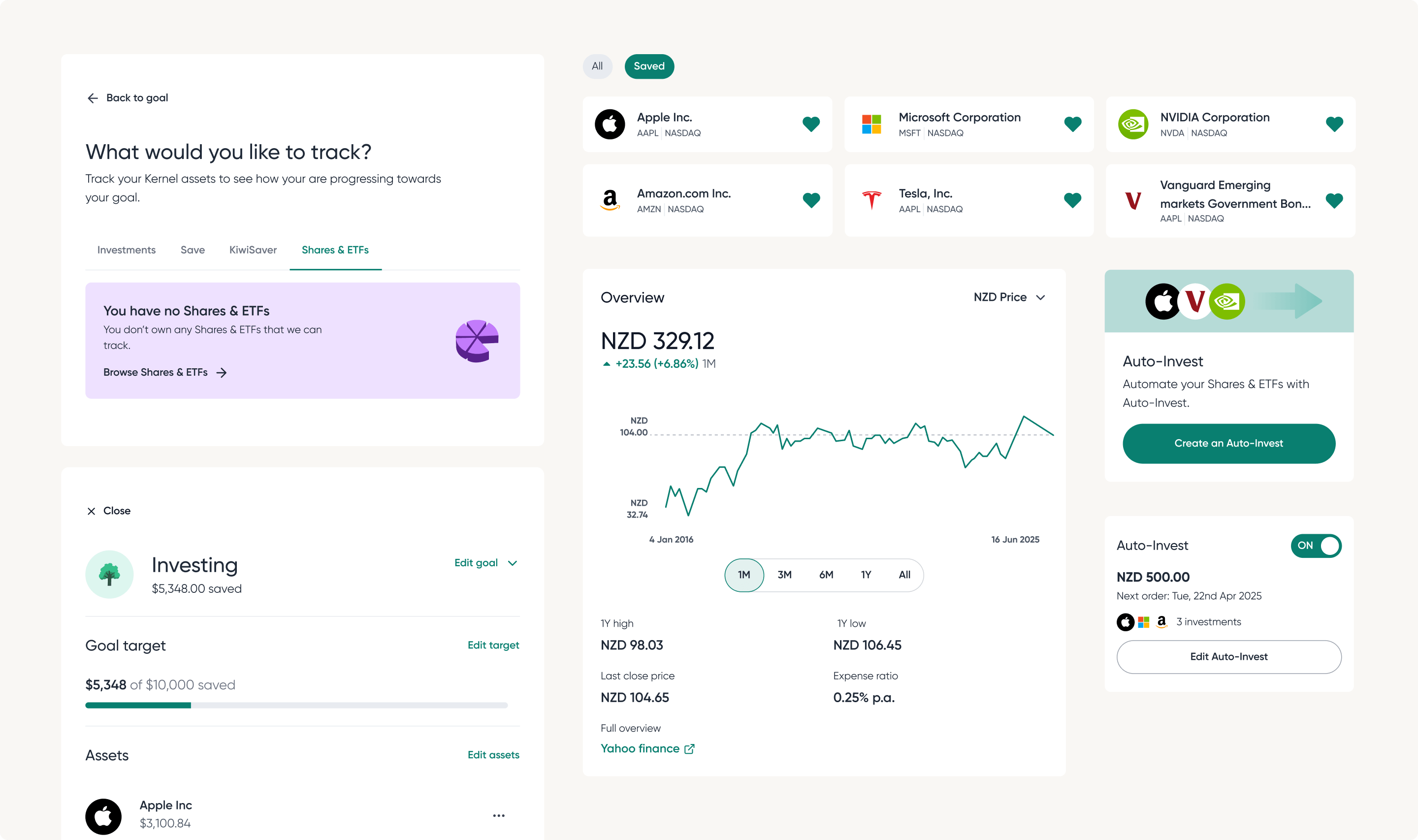
Chapter
The public release was well received. While some saw Shares and ETFs as an unexpected move, many users welcomed the added flexibility. The feature has not only provided a localised option for existing users with shares and ETF holdings, but also has attracted new customers to the platform. Post-launch feedback largely validated the priorities we had already been working on, reinforcing confidence in our roadmap.
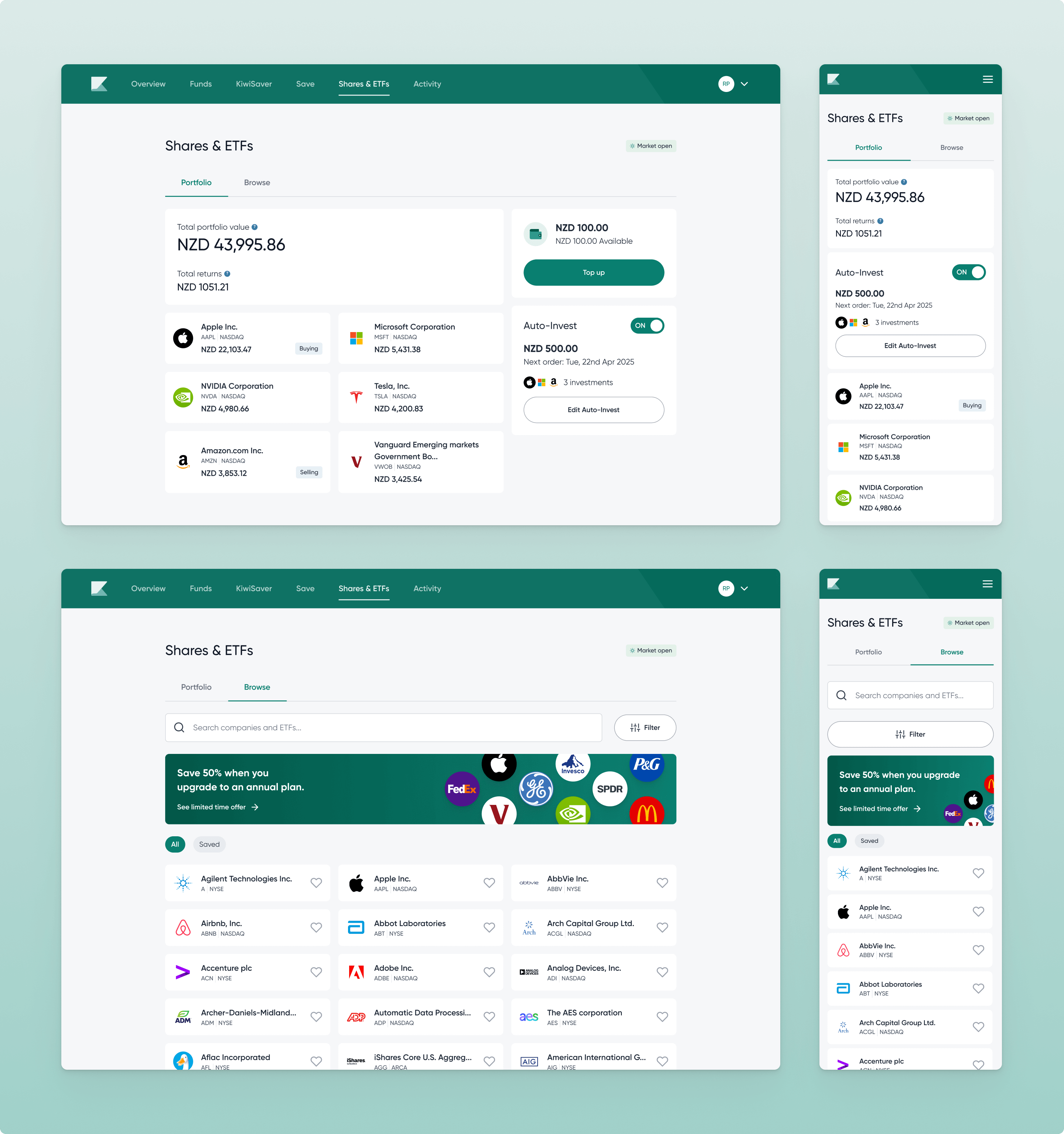
Ahead of launch, I partnered with our front-end developer to deliver a marketing site page that connected both user research insights and brand messaging. Shares and ETFs can be polarising, some welcomed the flexibility, while others saw it as a surprising move for Kernel. We worked hard to ensure the offering integrated seamlessly with the existing brand experience.
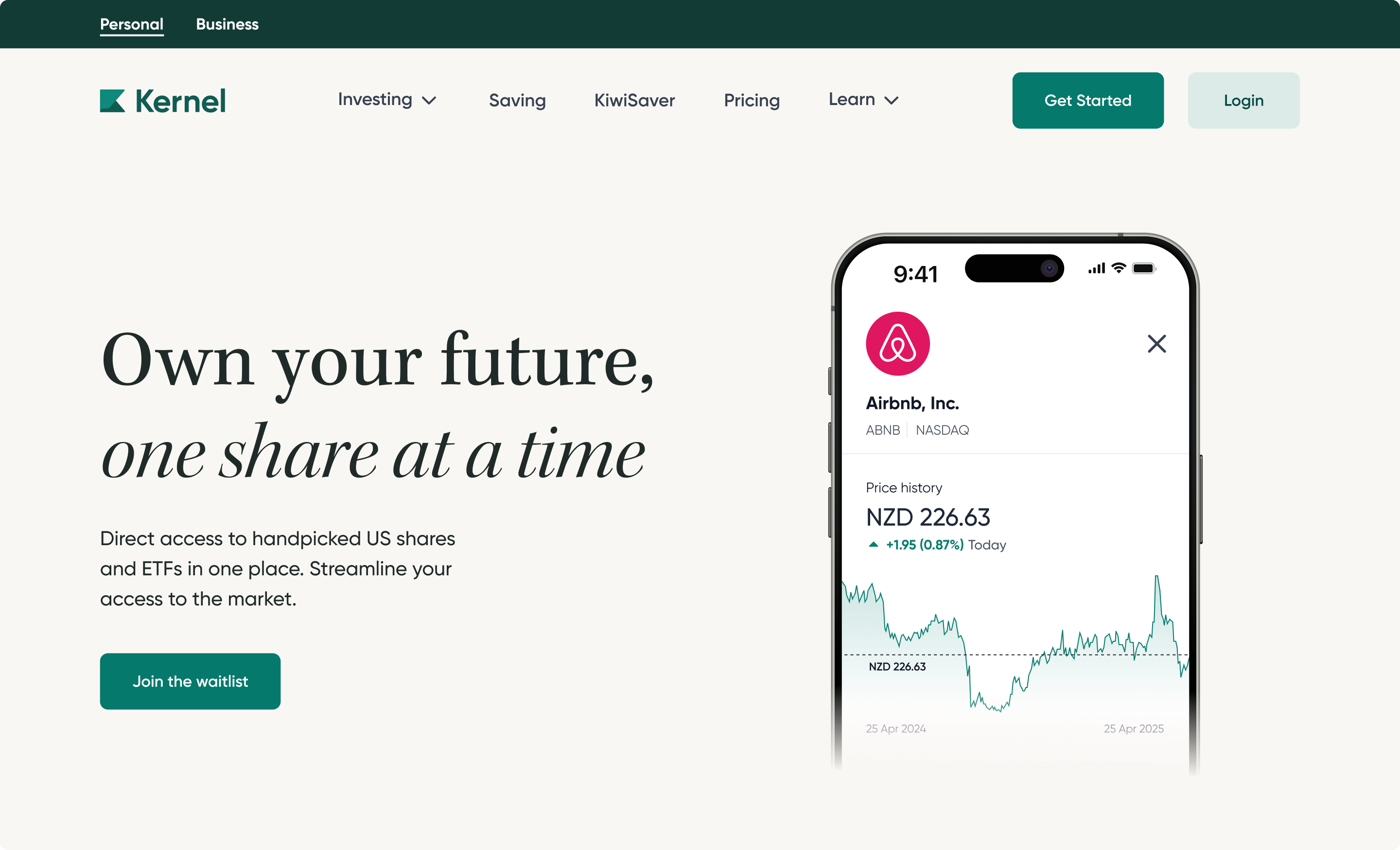
Chapter
As at July, 2025
NZD 524
Average trade amount
18%
Shares & ETFs accounts opened by eligible accounts
NVDA
Most popular share
Chapter
Strong planning and phased feedback paid off. The launch was smooth, and we were able to quickly deliver incremental improvements. Synthesised feedback loops allowed us to stay tightly aligned to user needs.
Prioritising speed to market meant some compromises. Shares and ETFs remains siloed from the broader Kernel ecosystem for now. Future work will focus on integration and expanding appeal beyond early adopters to the wider user base.